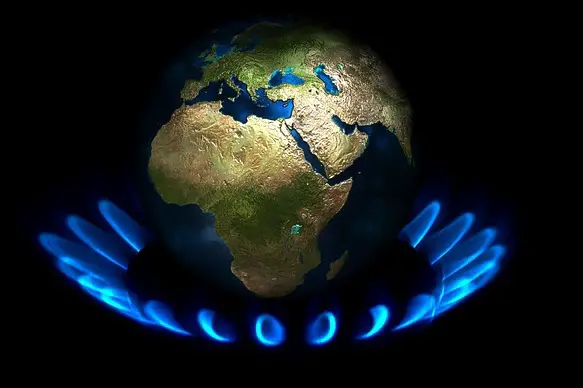Liquified Natural Gas (LNG) imports rose significantly in the EU and the UK last year. The rise came as Europe sought to replace the supplies lost when Russia’s exports trailed off due to the geopolitical conditions arising out of the situation in Ukraine. Now, according to a new report from British energy giant Shell, The LNG Outlook for 2023, published on Thursday, it appears the underlying structural shifts in supply chains will only cause that trend to continue.
According to the report, the EU and UK imported 121 million tons of LNG in 2022, for a 60% increase over 2021 levels. The surge was due almost entirely to the frantic search for fuel supplies following the gradual reduction and eventual cessation of Russian supplies delivered through the Nord Stream 1 pipeline.
Europe was able to acquire the necessary supplies in part due to a lag in demand from China. China saw large portions of its economy repeatedly shut down at the time, due to the imposition of its strict zero-Covid policies at the detection of even a handful of cases of the virus in various city centers. Also assisting was a decrease in imports by South Asia. However Shell noted that “Europe’s rapidly rising appetite for LNG” will spur increased competition for limited new supplies in the global marketplace over the next two years.
The report also noted that as demand in Europe has increased, it has pushed Asian spot LNG prices to record highs approaching $70.5 per million British thermal units (mmBtu)) and that has generated “volatility in energy markets around the world.”
Steve Hill, Shell’s executive vice president for energy marketing noted, “The war in Ukraine has had far-reaching impacts on energy security around the world and caused structural shifts in the market that are likely to impact the global LNG industry over the long term. It has also underscored the need for a more strategic approach – through longer-term contracts – to secure reliable supply to avoid exposure to price spikes.”
The trade globally for LNG reached 397 million tons in 2022, which was 16 million tons more than in 2021. According to Shell’s analysis, the global market for LNG will continue to be tight into the mid 2020’s as Europe and Asia both compete for a limited supply.
The report went on, “In the near term, the global LNG market is expected to remain tight and exposed to supply and demand shocks, with limited new supply coming online. More investment in supply will be needed to meet future LNG demand… LNG is becoming an increasingly important pillar of European energy security, supported by the rapid development of new regasification terminals.”
Shell predicts the demand for LNG globally will increase to 700 million tons by 2040, with a supply-demand gap to begin to appear by the late 2020’s.

